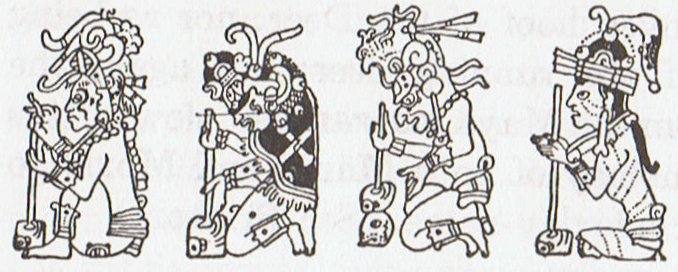|
Kaph is
thought to have been derived from a pictogram of
a hand (in both modern Arabic and modern Hebrew,
kaph means palm/grip) ...
...
The manik, with the tzab, or
serpent's rattles as prefix, runs across Madrid
tz. 22 , the figures in the pictures all holding
the rattle; it runs across the hunting scenes of
Madrid tz. 61, 62, and finally appears in all
four clauses of tz. 175, the so-called 'baptism'
tzolkin. It seems impossible, with all this, to
avoid assigning the value of grasping or
receiving. But in the final confirmation, we
have the direct evidence of the signs for East
and West. For the East we have the glyph
Ahau-Kin, the Lord Sun, the Lord of Day; for
the West we have Manik-Kin, exactly
corresponding to the term Chikin, the
biting or eating of the Sun, seizing it in the
mouth.



The pictures
(from Gates) show east, north, west, and south;
respectively (the lower two glyphs) 'Lord' (Ahau)
and 'grasp' (Manik).
Manik was the 7th day sign of the 20 and
Ahau the last ... |


















